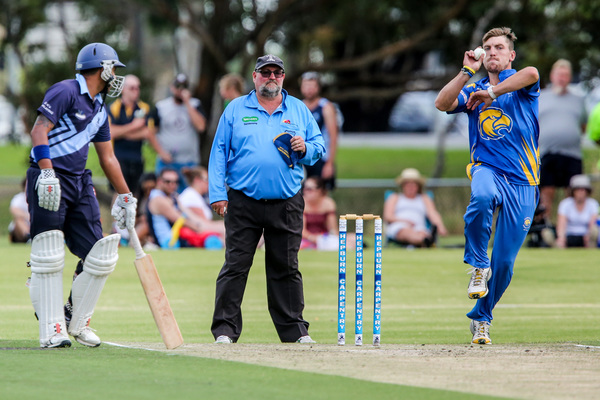
By Nick Creely
Local cricket may be in for change after Cricket Victoria released a blueprint for the future of community cricket across Melbourne last week.
The vision proposes the transition of metropolitan cricket, and potentially parts of country cricket in the future, towards a five-zone model that is focusing primarily on participation and development of the game, with Cricket Victoria and its steering committee – which is made up of representatives from local cricket associations such as the Dandenong District Cricket Association.
It is aiming to build on the successful set up of Cricket Southern Bayside in 2016/’17, and work cohesively with the 22 metropolitan cricket associations across Melbourne.
The new zones are geographically aligned with local government boundaries and made up of North West, Northern, Eastern and South East, as well as Southern Bayside.
The South East zone is both the Greater Dandenong and Casey City Council areas, with the one main association – the DDCA – the primary focus at this stage.
Cricket Victoria general manager of Game and Market Development Rohan O’Neill spoke to Star News Group to outline the blueprint and exactly what it means for cricket in the south-east.
“We’ve still got a fair bit of work to do in terms of the consultation – the strategy was designed with key people from within community cricket, and as we noted in the release there is a series of next steps to work through with the associations particularly, and ultimately the clubs because they’re the most critical element of it,” he explained.
“We’re pleased with the design of it (the zones) with the people on the steering committee, who are the lifeblood of local cricket – we’ve got a fair bit of work to do to now build it in the local zones because each zone is slightly different in the way they’re set up.
“The zones are set up around council alignment – they’re our biggest sponsor of local cricket – but secondly, it’s around the associations – the DDCA do a great job delivering cricket in the summer, whether it be juniors and turf – it’s set up with them as the critical stakeholder.
“The complexity is far less in the south-east because there is only really one main association and the Sunday competition as well – this is beyond turf cricket, it’s also about trying to support junior cricket participation.
“We feel it will build and aim to improve on the current model – it utilises the great work of the DDCA and the clubs but provides support, because we’re seeing a lot of pressure in time for people to run competitions – we want to get more girls competitions going as well, and someone has to run it – we want to support that better, and this has been developed with people from the DDCA.”
DDCA president Michael Hawking said the new zone was in the early stages of development, with the make-up of the model and who it impacted still an ongoing discussion.
“We’ll see what happens – we agree with the premise, and we do need a paid administrator,” he said.
“Right now, it’s at the information gathering stage – we want to know what we’re agreeing to – all the clubs have been informed and it’s not up to me or the DDCA to make a decision – it’s up to the clubs at the end of the day.
“We want to stress that we want to retain our independence – certain things like the annual Wookey Medal and the name we want to keep – there’s still a long way to go in this process.”
Each zone will have a paid full-time administrator to run the management of the competitions, as well as financial backing from Cricket Victoria and a more meaningful relationship with Premier Cricket clubs.
There are currently six clubs in the West Gippsland Cricket Association that are based in City of Casey – Carlisle Park, Clyde, Cranbourne Meadows, Devon Meadows, Merinda Park and Tooradin – but they are a part of a country competition despite crossing over with metropolitan clubs.
O’Neill said at this stage the focus was primarily on metro competitions, but didn’t rule out them being involved in the south east model in the future.
“We’re very pragmatic about the line – whenever you draw a line, there’s going to be a grey zone on either side – we will see clubs that have historical ties with competitions still staying in there – that’s not a problem – but in the main, it would make sense for them to be linked locally,” he said.
“We’re very respectful of the members of the Victorian Country Cricket League, and naturally this is being built primarily through the metropolitan leagues, but in the future it would be up to the committee in the south east to determine how it best fits – the aim is to support cricket administration and development better than what we currently are.
“Down that way (West Gippsland) it would be a positive support for the clubs, but there is a lot of detail to work through with each of the zones – clubs will determine where they affiliate, it comes back to them – they need to know all of the information first though.
“Each area obviously is made up differently – our general principle is country or metro cricket, it doesn’t matter – we want to support – but at this stage it has been developed with a focus on metro cricket.”





